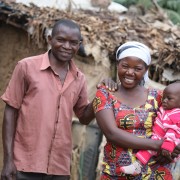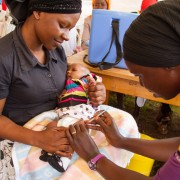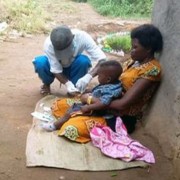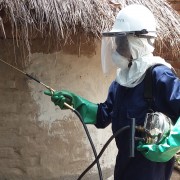Speeches Shim

Jeanette and Ayubu hold fond memories of their little village in the Democratic Republic of Congo where everything around them brought hope. While in Kisangani they sold groundnuts, cassava flour, maize and beans to take care of their four children. However, their flourishing trade came to a halt when they left their country after facing constant attacks and theft by an armed group. Having no means to carry their sacks of produce, they left for safety.

Immunization has greatly improved child survival in Uganda and is recognized as a key lifesaving intervention. The COVID-19 pandemic, however, has threatened to roll back progress. Movement restrictions have meant that fewer patients are able to get the medical care they need, and fears of infection have made many more reluctant to go to health centers. To address these challenges, the Ministry of Health and its partners have been working to make sure that vital health services, including immunizations, continue as much as possible.

The United States Agency for International Development (USAID) is continuing its long-standing commitment to protecting and promoting biodiversity in Uganda through three new biodiversity awards totaling $21.5 million (UGX 80 billion). These multi-year activities will reduce wildlife trafficking, help communities manage their natural resources, and promote real-world alternatives to poaching and encroachment into natural areas. They will also provide support for authorities in protected areas and engage the private sector to develop sustainable solutions for affected communities. The activities will reduce wildlife crime by improving the capabilities and coordination of local and national authorities, and will further develop the Uganda Biodiversity Fund—an organization that USAID helped found and is now working with as a partner—into an institution that can generate and manage financing for biodiversity conservation nation-wide. Additionally, these activities will have the benefit of reducing human-wildlife interaction that can lead to the emergence of pandemic zoonotic diseases.

In a small village in the Kalangala district of central Uganda, Ronald Kiribwa’s cell phone rings. The caller is a mother from another village who has a sick child and needs help. Without hesitation, Kiribwa prepares his medicine box and jumps onto his motorbike to go and see the child. He suspects the child may have malaria because Kalangala is a malaria endemic district. After confirming the positive malaria test, Kiribwa provides treatment.

On May 25, the U.S. government’s President’s Malaria Initiative (PMI) began the second phase of indoor residual spraying (IRS) in eight high-burden malaria districts in Lango and Teso sub-regions through its VectorLink Project. PMI is led by the United States Agency for International Development (USAID) and implemented together with the U.S. Centers for Disease Control and Prevention (CDC) in partnership with the Ugandan Ministry of Health. Phase two of spraying is expected to last 24 days and will include the following districts: Otuke, Alebtong, Lira, Dokolo, Kaberamaido, Kalaki, Amolatar, and Serere. This second phase of spraying follows a March spraying completed by the VectorLink Project in Butebo, Pallisa, Kibuku, Budaka, Butaleja, Namutumba, Bugiri, and Tororo.


Comment
Make a general inquiry or suggest an improvement.